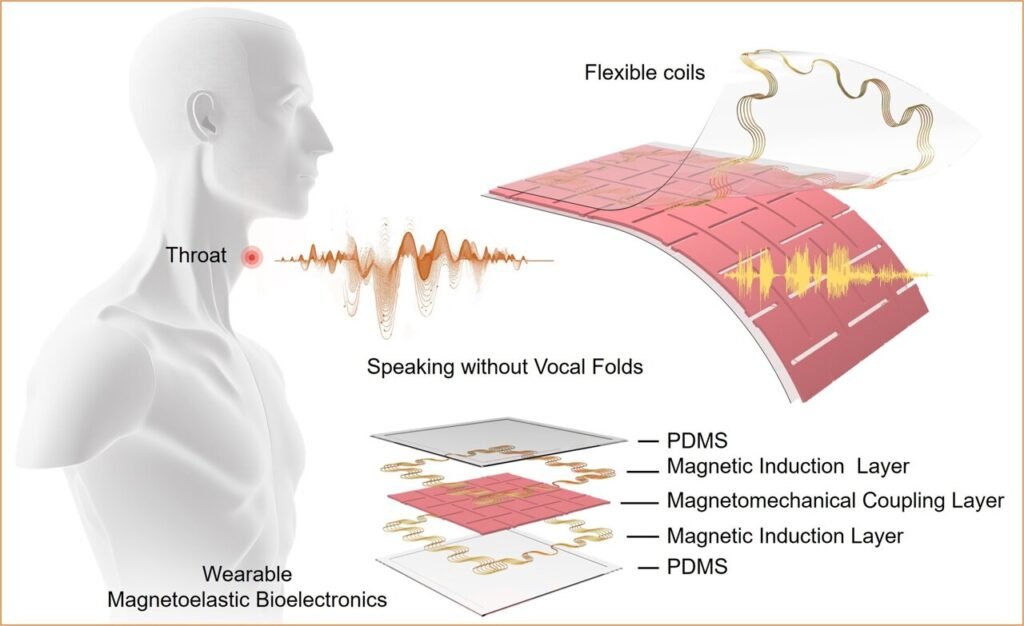Scientists made AI stickers to help people with speaking issues
Scientists have made new patch stickers that use artificial intelligence (AI) to help people with speaking issues communicate again. This sticky AI patch will read the neck muscle movements of an individual and convert them into speech.
Nature Communications published this study. Scientists from the United States report that muscle movements entirely power this microscopic sticky patch.
AI stickers made by US scientists are fixed to the skin and convert laryngeal muscle movements into electric signals. These signals are then converted into speech by a machine learning algorithm (MLA). MLA is also a type of artificial intelligence.

Following MLA conversion speech, the speaker performs the sentences a person desires to pronounce using the initial version. It can currently communicate only pre-recorded phrases.
Lead study author Ziyuan Che of the University of California, Los Angeles, revealed the patch works without requiring the person to use their voice cords. So, it is the plus point of these new AI stickers.
This means it can help people regain their ability to speak who have injured vocal chords. According to the study, about one-third of adults would experience at least one vocal damage during their lifetime.
Click here to find out why scientists remove water from Earth’s atmosphere
The scientists stated that the current treatments for major vocal difficulties, such as mobile devices like an electrolarynx can be inconvenient, uncomfortable, or painful. However, these new AI stickers are different from conventional vocal treatment devices.
AI sticky patch is waterproof, about the size of a big coin, and weighs barely seven grams. Its texture is similar to that of a rubber glove. Hence, these features make AI stickers efficient in vocal aid devices.
However, Scientists had eight volunteers who did not have vocal issues to speak and whisper five lines to test the device. It was discovered that the patch worked when standing, walking, and running.
Read More:
- Scientists created superflies to eat human poop & clean streets
- Samsung Galaxy Z Flip 6 5G features, specifications & price
- NASA sent first 4K video from aircraft to the space station
- Dogs behave depressed after sensing stress in dogs, study shows
- Australian govt issued notice to tech companies to report on child abuse
- Oppo K12x 5G release date, features, specifications & price
Share this content:









Post Comment